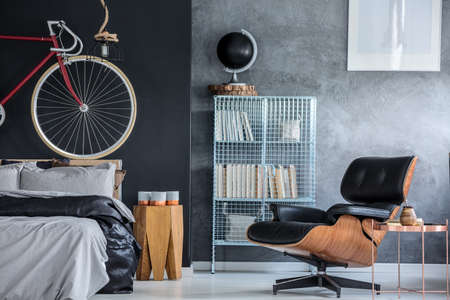Introduction to Interior Design Projects in Britain
When it comes to interior design, Britain stands apart with its rich architectural heritage, deep-rooted traditions, and a keen eye for blending the old with the new. From Victorian terraces in London’s leafy suburbs to Georgian townhouses in Bath, British homes are as diverse as the landscape itself. Yet, there are distinctive features that define the UK approach: an affinity for period details, thoughtful use of space due to typically compact layouts, and a preference for understated elegance over ostentation. British interiors often celebrate original features—think ornate cornicing, sash windows, and rustic fireplaces—while effortlessly weaving in contemporary comforts and personal flair. This unique interplay shapes not only the aesthetics but also the practicalities and costs associated with interior design projects across the country. As we delve into real-life case studies, understanding these cultural nuances is key to appreciating how interior design is approached, budgeted, and experienced by British homeowners.
2. Budgeting the British Way: Average Costs Explained
When it comes to interior design, British homeowners are known for their pragmatic approach to budgeting. Rather than extravagant spending, most seek a balance between quality and value, with clear expectations set before the first paint tin is opened. The cost of interior design services and renovations can vary widely across regions and property types, reflecting local economies and the quintessential British preference for understated elegance over ostentation.
Typical Expense Ranges Across Regions
The following table breaks down average costs for popular interior design projects in Britain, highlighting regional differences that reflect both economic realities and cultural tendencies:
| Region | 1-Bed Flat (Design Only) |
3-Bed House (Full Renovation) |
Heritage Property (Specialist Work) |
|---|---|---|---|
| London & South East | £1,500 – £4,000 | £35,000 – £80,000 | £50,000+ |
| Northern England | £900 – £2,500 | £25,000 – £55,000 | £30,000+ |
| Scotland & Wales | £1,000 – £3,000 | £28,000 – £60,000 | £35,000+ |
| South West & Midlands | £1,200 – £3,500 | £30,000 – £65,000 | £40,000+ |
The British Spending Mindset: Priorities and Pitfalls
The typical British homeowner prioritises investment in high-traffic spaces like kitchens and living rooms while seeking savings on secondary bedrooms or corridors. There’s a strong emphasis on durability—wool carpets over synthetics, solid wood rather than MDF—echoing the British saying “buy cheap, buy twice.” Many also favour sourcing materials from trusted UK brands or local craftsmen as a nod to supporting homegrown talent.
Common Cost Expectations and Hidden Expenses
A standard expectation is that professional design fees will account for 10–15% of the total project budget. However, savvy Brits know to factor in additional costs such as planning permissions for listed buildings or VAT on labour and materials. It’s not uncommon for unexpected structural issues (think ancient wiring or damp) to nudge budgets upwards—an experience familiar to anyone who’s ever renovated a Victorian terrace or rural cottage.

3. Case Study One: Victorian Flat in London
A Journey Through a Classic London Renovation
Our first case study delves into the transformation of a quintessential Victorian flat nestled in one of London’s historic neighbourhoods. Characterised by soaring ceilings, ornate cornices, and sash windows, these properties are highly sought after yet come with their own set of unique challenges and opportunities when it comes to interior design.
Cost Factors: Heritage Meets Modern Living
The cost of refurbishing a traditional Victorian flat in London can vary dramatically depending on the scope of work and the level of finish desired. In this particular project, the total expenditure reached approximately £65,000. Key cost drivers included restoring original features—such as ceiling roses and fireplaces—upgrading insulation without compromising period details, and sourcing authentic materials like reclaimed timber flooring. Labour costs in London are notably high, especially for skilled tradespeople experienced in heritage properties. Another significant portion of the budget was allocated to bespoke joinery, tailored to fit quirky room dimensions and alcoves so typical of Victorian architecture.
Design Challenges: Balancing Old and New
One primary challenge was marrying modern functionality with historical integrity. The owners wished to introduce contemporary comforts—underfloor heating, smart lighting, and an open-plan kitchen—while preserving the building’s character. This required meticulous planning and frequent consultation with conservation officers. Unexpected issues arose during construction, such as hidden damp patches and outdated wiring, both common in period homes and contributing to additional unforeseen expenses.
Cultural Preferences: A British Sensibility
The finished design reflects a distinctly British approach to interiors: understated elegance infused with personal touches. Walls were painted in muted Farrow & Ball shades, while soft wool carpets and velvet upholstery added warmth against the often grey London weather. Traditional elements like picture rails were retained, but complemented by modern British-made lighting fixtures and locally crafted cabinetry. The result is a space that feels both rooted in its Victorian past and comfortably suited to contemporary urban life—a perfect example of how interior design in Britain often celebrates heritage while embracing quiet innovation.
4. Case Study Two: Suburban Semi in the North
Setting the Scene: A Northern Semi-Detached Transformation
Nestled within a leafy suburb on the outskirts of Manchester, this case study explores the interior design journey of a classic British semi-detached home. The property—owned by a young family keen to blend modern comfort with northern character—offered an ideal canvas for a sensitive yet practical makeover. Here, design choices were influenced not just by budgetary constraints, but also by local culture and everyday living needs.
Budgeting Realities: Northern Sensibilities Meet Practical Planning
Unlike high-end city projects, suburban renovations in the North often prioritise value for money and hard-wearing materials. The table below breaks down the project’s key budget allocations:
| Area/Element | Approximate Cost (£) | Key Considerations |
|---|---|---|
| Lounge & Dining Room Redecoration | 2,000 | Durable paint, energy-efficient lighting |
| Kitchens (Refurbishment, not full replace) | 6,500 | Laminate worktops, integrated appliances |
| Bedrooms (x3) | 4,000 | Bespoke storage, neutral palettes |
| Labour & Professional Fees | 5,000 | Local trades, regional rates |
| Total Project Cost | £17,500 |
Cultural Influences: A Nod to Northern Heritage
The homeowners’ brief highlighted a desire to reflect local identity without falling into cliché. This translated into choosing robust materials like oak-effect flooring—reminiscent of traditional mill houses—and patterned tiles inspired by Victorian terraces common across the region. Locally sourced furnishings and art from independent makers further grounded the design in its northern context.
Pitfalls and Priorities: Lessons from the Process
A major learning point was balancing aspirations with practicality. While open-plan living was initially considered, the family ultimately opted for partially separated spaces—a nod to traditional layouts that suit colder climates and busy households. Energy efficiency upgrades were prioritised over luxury finishes, reflecting both environmental awareness and rising utility costs in Britain.
This project underscores how interior design in suburban northern Britain is shaped by local culture as much as financial realities—demonstrating that authentic style needn’t come at the expense of substance or sensibility.
5. Common Pitfalls and Lessons Learnt
While embarking on an interior design project in Britain can be immensely rewarding, it’s not without its fair share of challenges. Many homeowners find themselves surprised by the unexpected hurdles that arise, even after meticulous planning. In this section, we delve into the real-life experiences that British homeowners frequently encounter during renovations, highlighting both common pitfalls and invaluable lessons learnt along the way.
Navigating Regulations and Permissions
One of the first surprises for many is the maze of building regulations and permissions unique to the UK. From listed building consent in historic towns to adhering to fire safety standards in London flats, failing to check local requirements can cause costly delays. Several case studies reveal homeowners who underestimated how long it would take to secure planning permission, especially when altering period properties or making changes visible from the street. The lesson? Always consult your local council or a professional early in the process to avoid last-minute headaches.
Sourcing Materials Locally
Another recurring challenge is sourcing suitable materials within Britain. While buying locally can reduce lead times and support British craftsmanship, it sometimes comes at a premium—especially for reclaimed wood, bespoke tiles, or eco-friendly finishes popular in UK interiors. Some homeowners have found themselves caught out by supply chain issues post-Brexit, particularly when importing specialist fittings from Europe. The key takeaway here is to start sourcing early and always have alternative suppliers in mind.
Communication with Designers and Tradespeople
A frequent theme in homeowner stories is the importance of clear communication with designers and tradespeople. Misunderstandings over design briefs, timelines, or budget constraints can quickly escalate. One homeowner from Manchester shared how vague specifications led to unexpected costs when her builder interpreted ‘heritage style’ differently than she intended. Regular site meetings and detailed written agreements are now her golden rules.
Unexpected Surprises: From Hidden Costs to British Weather
No British renovation story is complete without mention of unforeseen costs—be it discovering outdated wiring behind 1930s wallpaper or unearthing damp issues during a kitchen extension. Add to this the infamous British weather, which has delayed countless garden room builds and exterior works. Savvy renovators recommend setting aside a contingency fund (typically around 10-15% of your total budget) to absorb these inevitable surprises.
Lessons for Future Projects
If there’s one thing these case studies make clear, it’s that flexibility and thoroughness pay dividends. By learning from others’ experiences—whether it’s double-checking local regulations, being resourceful with suppliers, or fostering honest dialogue with your team—future projects can run more smoothly and result in spaces truly tailored to British lifestyles.
6. Key Takeaways: Maximising Value on a British Budget
Drawing from our case studies, it’s clear that achieving a stylish and functional home interior in Britain doesn’t have to break the bank. Several practical strategies emerged from real-life experiences, underpinned by a uniquely British sensibility towards value, quality, and individuality.
Prioritise What Matters Most
British homeowners often find success by focusing their budget on key rooms—typically the kitchen or living room—where quality materials and craftsmanship make the biggest difference. Don’t feel pressured to overhaul every space at once; phased renovations allow for thoughtful choices without financial strain.
Embrace Local Craftsmanship and Sustainable Choices
Supporting local artisans and sourcing British-made furnishings not only adds character but can also be more cost-effective in the long run, thanks to reduced delivery costs and higher durability. Sustainability is increasingly valued, so upcycling vintage finds from local markets or refurbishing existing furniture reflects both cultural consciousness and savvy budgeting.
Collaborate Effectively with Designers
The most satisfied clients in our case studies were those who communicated openly with their designers about budget constraints and expectations. Many British designers offer flexible packages—from full project management to hourly consultations—so don’t hesitate to ask for bespoke services tailored to your needs.
DIY Where Sensible
Britain has a proud tradition of DIY. While some tasks are best left to professionals (like electrical or structural work), painting, assembling flat-pack furniture, or even basic tiling can be tackled by enthusiastic homeowners, stretching the budget further.
Keep an Eye Out for Hidden Costs
Always factor in contingency funds for unexpected expenses such as building permits or hidden structural issues uncovered during renovations. As seen in several case studies, a little foresight goes a long way in avoiding financial surprises.
Cultural Nuance: The British Approach to Home Pride
Ultimately, British interiors are shaped by a blend of practicality, personality, and history. By making informed decisions—guided by real-world examples—you can create a home that feels both distinctly yours and unmistakably British, all while respecting your financial boundaries.

